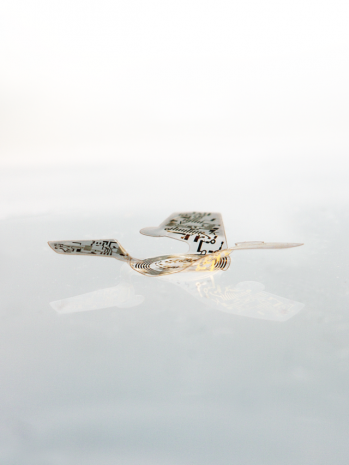
Breaking News
 Quantum walkie-talkie: China tests world's first GPS-free radio for border zones
Quantum walkie-talkie: China tests world's first GPS-free radio for border zones
 RIGHT NOW!: Why was lawyer Van Kessel, of the civil case on the merits in the Netherlands, arrested?
RIGHT NOW!: Why was lawyer Van Kessel, of the civil case on the merits in the Netherlands, arrested?
 PENSION FUNDS PANIC BUYING SILVER - Ratio Below 60 Triggers $50B Wave (Danger Next Week)
PENSION FUNDS PANIC BUYING SILVER - Ratio Below 60 Triggers $50B Wave (Danger Next Week)
 Dollar set for worst year since 2017, yen still in focus
Dollar set for worst year since 2017, yen still in focus
Top Tech News
 EngineAI T800: Born to Disrupt! #EngineAI #robotics #newtechnology #newproduct
EngineAI T800: Born to Disrupt! #EngineAI #robotics #newtechnology #newproduct
 This Silicon Anode Breakthrough Could Mark A Turning Point For EV Batteries [Update]
This Silicon Anode Breakthrough Could Mark A Turning Point For EV Batteries [Update]
 Travel gadget promises to dry and iron your clothes – totally hands-free
Travel gadget promises to dry and iron your clothes – totally hands-free
 Perfect Aircrete, Kitchen Ingredients.
Perfect Aircrete, Kitchen Ingredients.
 Futuristic pixel-raising display lets you feel what's onscreen
Futuristic pixel-raising display lets you feel what's onscreen
 Cutting-Edge Facility Generates Pure Water and Hydrogen Fuel from Seawater for Mere Pennies
Cutting-Edge Facility Generates Pure Water and Hydrogen Fuel from Seawater for Mere Pennies
 This tiny dev board is packed with features for ambitious makers
This tiny dev board is packed with features for ambitious makers
 Scientists Discover Gel to Regrow Tooth Enamel
Scientists Discover Gel to Regrow Tooth Enamel
 Vitamin C and Dandelion Root Killing Cancer Cells -- as Former CDC Director Calls for COVID-19...
Vitamin C and Dandelion Root Killing Cancer Cells -- as Former CDC Director Calls for COVID-19...
 Galactic Brain: US firm plans space-based data centers, power grid to challenge China
Galactic Brain: US firm plans space-based data centers, power grid to challenge China
Flying Microchips The Size Of A Sand Grain Could Be Used For Population Surveillance

The tiny microfliers, whose development by engineers at Northwestern University was detailed in an article published by Nature this week, are being billed as the smallest-ever human-made flying structures.
Tiny fliers that can gather information about their surroundings
The devices don't have a motor; engineers were instead inspired by the maple tree's free-falling propeller seeds — technically known as samara fruit. The engineers optimized the aerodynamics of the microfliers so that "as these structures fall through the air, the interaction between the air and those wings cause a rotational motion that creates a very stable, slow-falling velocity," said John A. Rogers, who led the development of the devices.
"That allows these structures to interact for extended periods with ambient wind that really enhances the dispersal process," said the Northwestern professor of materials science and engineering, biomedical engineering and neurological surgery.
The wind would scatter the tiny microchips, which could sense their surrounding environments and collect information. The scientists say they could potentially be used to monitor for contamination, surveil populations or even track diseases.
Their creators foresee microfliers becoming part of "large, distributed collections of miniaturized, wireless electronic devices." In other words, they could look like a swarm.



